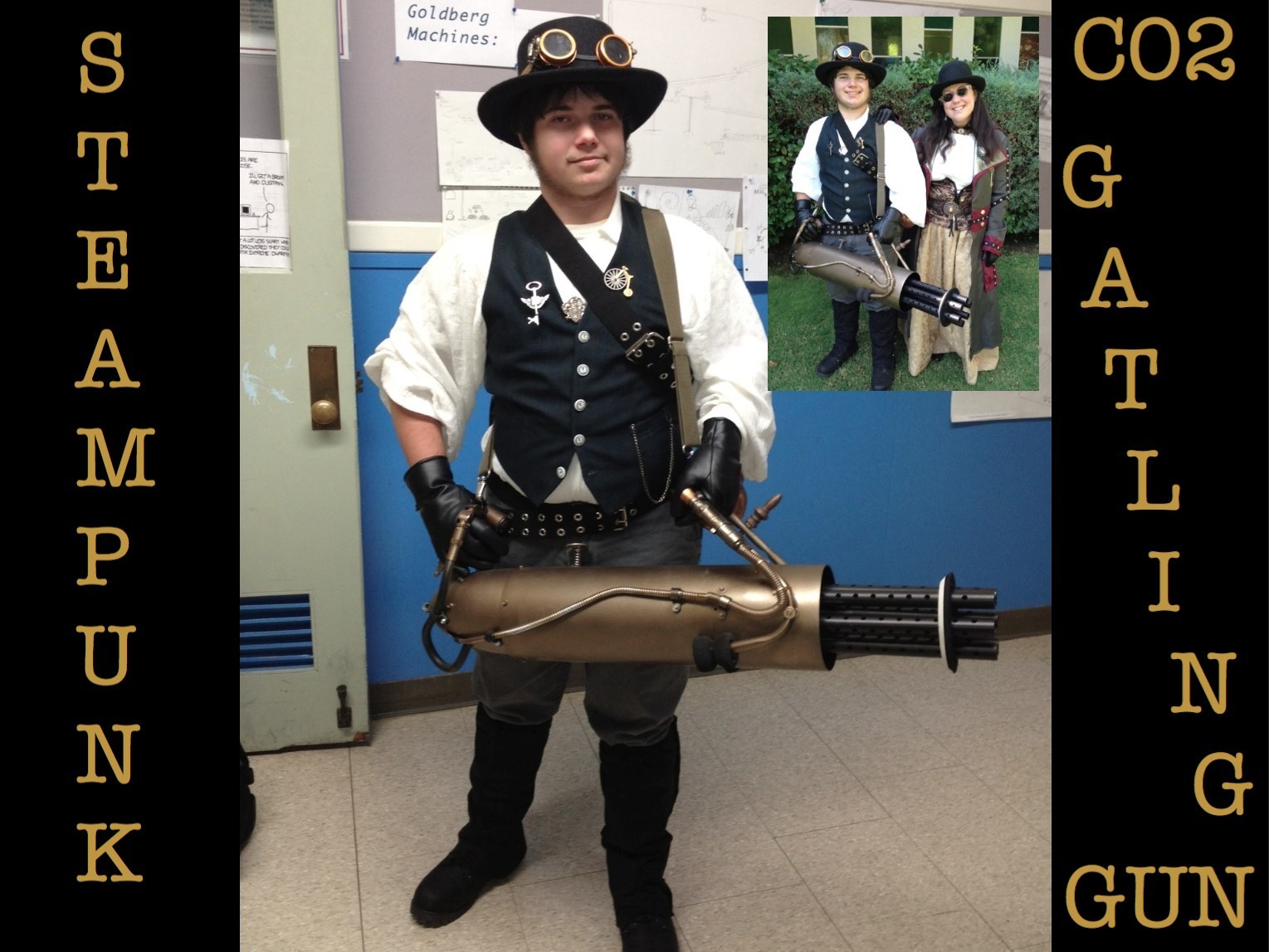A heavy-duty quick-release air-valve connector with safety shut-off valve is connected to the hose coming from the CO2 tank. This is then connected to the intake connector on the air-nozzle “trigger.”
All connectors, pipes, and fittings need to have nylon tape at the connection points. Everything must be wrench-tightened and pressure-tested.
Gloves should be worn while operating the unit to prevent any freeze-burns. Do not operate in closed spaces.
Do not shoot directly at people.
Adult supervision is required.
A hose clamp can be used to keep the handle valve of the CO2 fire extinguisher open while using the gun. This allows quick deployment and shut-off (the clamp can be slid on and off quickly if it is not fully tightened).


